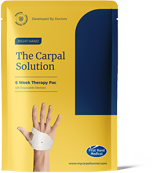Carpal Tunnel Surgery Recovery Times
Patients find a wide variety of recovery times depending on many different factors.
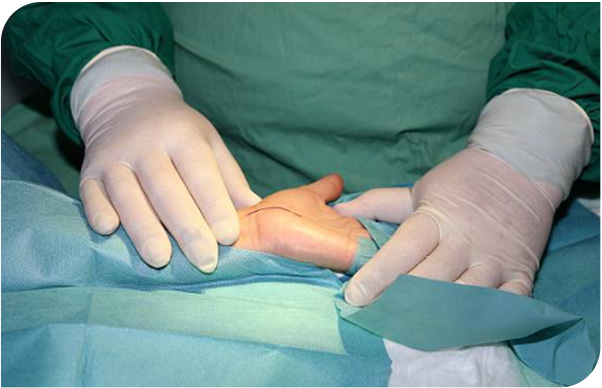

By The Carpal Solution Medical Team Over 300 years combined medical experience

Carpal Tunnel Surgery Recovery Times
Patients find a wide variety of recovery times depending on many different factors.


By The Carpal Solution Medical Team Over 300 years combined medical experience

Recovery Times After Carpal Tunnel Surgery
 People often hear that Carpal Tunnel Surgery is quick and easy to perform, implying that it is no big deal. From a surgeon’s perspective, that is true.
People often hear that Carpal Tunnel Surgery is quick and easy to perform, implying that it is no big deal. From a surgeon’s perspective, that is true.
A Carpal Tunnel Release Surgical Procedure generally takes less than 30 minutes and the incision does not need to penetrate Deep into the body to sever the Transverse Carpal Ligament.
For a Surgeon, it is one of the simplest procedures to perform. It can be done as an “outpatient” procedure, so you do not have to spend the night in the hospital. From that perspective, it is relatively simple.
However, from a patient’s perspective, you might say not so fast.
What are the recovery times after Carpal Tunnel Surgery?
- Patients find a wide variety of recovery times depending on many different factors.
- Successful Surgeons, by nature, need to be optimistic and tend to focus on positive outcomes when talking to patients prior to surgery. There are a lot of negative potential complications with any surgical procedure and Carpal Tunnel Syndrome is no exception to this rule. With only a 50 – 60 % success rate in patient surveys for first time Carpal Tunnel Operations, it is important to understand the potential complications. Carpal Tunnel Surgery does not always go according to the planned optimistic point of view.
- There are an infinite number of outcomes and recovery times of Carpal Tunnel Surgery. However, to keep the discussion simple, we will deal with the subject in three sections in a scientific statistical manner.
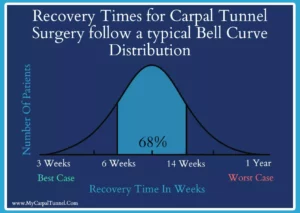 Best Case Recovery Scenarios about 16% of patients
Best Case Recovery Scenarios about 16% of patients- Typical Recovery Scenarios about 68% of Patients
- Worst Case Scenarios about 16% of Patients
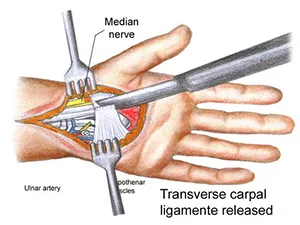 What is the average carpal tunnel surgery recovery time?
What is the average carpal tunnel surgery recovery time?
The Transverse Carpal Ligament is severed during surgery. It is similar to a nylon rope and is the strongest ligament holding the bones and muscles of the hand together in a compact and functional manner. Once it is severed hand strength is completely compromised until it heals back together. As with most parts of the body, it is less strong and functional after it has been severed and scars back together.
Typical Carpal Tunnel Operation Recovery Time Scenarios
Most patients (about 68%) find it difficult to do much, if any, activity for the first 2-3 weeks. They experience significant pain, swelling, and some lingering symptoms of Carpal Tunnel. The worst symptoms of Carpal Tunnel usually go away immediately because one of the walls of the Carpal Tunnel, the transverse Carpal Ligament has been severed and must scar back together during the healing period.
Some symptoms may be masked by the more intense pain of the trauma from surgery in the first 10 days, so it can be difficult to judge success of the procedure until the pain from the trauma of surgery has subsided. Fortunately, the mind can only focus one intense pain source at a time and therefore does not recognize less painful symptoms when present with more intense discomfort. Oral Pain Medication and antibiotics should be prescribed to deal with the pain and prevent infection. In brief, full recovery from Carpal Tunnel Surgery can take six weeks to over a year. It can involve a lot of visits to a physical therapist for rehabilitation over the course of that time frame. This is a broad time frame and depends on many factors. Some of the factors include the unpredictable formation of scar tissue.
Be patient healing from the trauma of Carpal Tunnel Surgery takes time. Don’t rush the process. Patients typically begin to recover some function within 3 weeks and are generally fully functional within 6 weeks to 12 weeks after Surgery if they follow the physical therapy guidelines provided.
Some patients in this group get completely better and resume their activities of their life before Carpal Tunnel without any limitations and are glad they had the procedure done, even though it took a little longer than expected to recover and the rehab was more intense than they had expected. They are relieved and happy about the result and are glad they got the problem fixed.
What most people don’t realize, at this point, is that Carpal Tunnel Surgery is not a permanent fix for CTS. It is a recurring syndrome that comes back for over 90% of people even after a successful surgery. CTS reoccurs for most within a period of between one year – up to ten years. Patients think everything is hunky-dory until the Carpal Tunnel Symptoms return.
Some of the patients in this category will find they have lingering symptoms of Carpal Tunnel. Their worst symptoms will be gone and they can function well, but they often have lingering numbness in the finger tips or tenderness at the point of incision or permanent loss of grip strength. Surgeons claim that the surgery was a success because the worst symptoms of Carpal Tunnel were eliminated, but from the patient’s perspective, it is a bit of a surprise to find that they still have some lingering symptoms even after several months have passed since the surgical procedure was performed. These lingering symptoms are annoying, but these symptoms do not prevent normal function, they are just annoying to deal with.
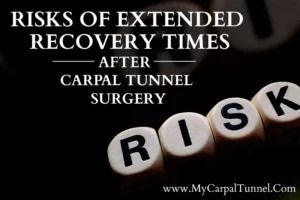 Am I at risk for a longer recovery time?
Am I at risk for a longer recovery time?
- Patients often ask, “Is there anything I can do to improve my recovery time?”
- Factors that can increase your recovery time from Carpal Tunnel Surgery and what you can do to improve your chances for a rapid recovery with no complications:
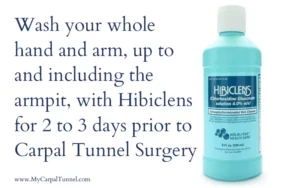 Failure to wash with Chlorihexidiene Gluconate (CHG) for two days prior to surgical procedure. You can obtain CHG from your local pharmacy. It does not require a prescription.
Failure to wash with Chlorihexidiene Gluconate (CHG) for two days prior to surgical procedure. You can obtain CHG from your local pharmacy. It does not require a prescription.- Extended period on Narcotic Pain Medication slows recovery – Get off pain medication as soon as you can. It will slow recovery and has serious side effects, including addiction.
- Failure to take Oral Antibiotics as indicated in post-operative prescription. Sometimes surgeons do not prescribe antibiotics after Carpal Tunnel Surgery. This is a mistake and each patient should insist on an antibiotic prescription to be filled prior to the surgical procedure, so that you have it when you are incapacitated after the surgery.
 Poor Hygiene of the area around the surgical incision post-surgery.
Poor Hygiene of the area around the surgical incision post-surgery.- Allowing the wound dressing to get wet and then not changing it out.
- Prior Exposure to Corticosteroid Injection within the previous 3 – 6 months. This is another good reason not to get a Steroid Injection to treat Carpal Tunnel, because it can cause more slow recovery rates and a predisposition for infection post-operation.
-
 Going back to work too soon after Carpal Tunnel Surgery
Going back to work too soon after Carpal Tunnel Surgery- Driving before your stitches have been removed
- Too long on anesthesia during operation due to complications
- Smoking can dampen the Body’s Immune System and slow recovery
- Post-Surgical Anxiety – Unexplained anxiousness, fear and worry
- Obesity Slows Recovery from any surgical procedure.
- Poor Nutrition Prior to Surgery and after surgery.
- Failure to follow Post-operation physical therapy protocol – Make sure the surgeon prescribes Physical Therapy so your insurance will cover the cost prior to the surgical procedure.
- Extreme Compression of the Median Nerve for many years prior to surgery can leave the nerve with permanent damage. This is rare, but it can happen.
- Exposure to antibiotic resistant bacteria on the skin or on the surgical equipment or operating table.
- Poor control of Diabetes blood sugar levels Prior to Surgery.
- Age will increase your risks of complications and slower recovery. The older you are the slower the recovery and the higher the chance of complications and infections.
Best Case Operation Recovery Time Scenarios
- In best case scenarios patients have no complications and immediately find relief of all of their Carpal Tunnel Symptoms.
- These patients do experience a lot of pain during the first 7 to 10 days from the trauma of surgery. The initial pain from surgery is managed with oral pain medication prescribed by your Doctor. The prescription for pain medication should be filled immediately prior to the surgery by yourself or immediately after the surgery by a friend or loved one, so you have it when the anesthetic wears off. Also, as a precaution most surgeons prescribe an antibiotic oral medication to guard against the potential for infection. This prescription should begin immediately after the surgery.
 In best case scenarios patients begin doing things with their hands within a week or two and are fully functional for normal activities within 3-6 weeks. Still, even though you might be feeling ready, care should be taken not to overdo it with intense activity with your hand until after 8 weeks to 10 weeks. Healing from the trauma of surgery takes time.
In best case scenarios patients begin doing things with their hands within a week or two and are fully functional for normal activities within 3-6 weeks. Still, even though you might be feeling ready, care should be taken not to overdo it with intense activity with your hand until after 8 weeks to 10 weeks. Healing from the trauma of surgery takes time.
All patients should begin physical therapy and follow the recommendations of the expert physical therapist in deciding which activities are appropriate and how much is too much. The appropriate movement can help accelerate your recovery while the wrong kind of activities too soon can cause more scar tissue to form.
It can be helpful to accelerate your recovery to elevate the hand while resting to facilitate the dispersion of inflammation and apply icing strategies after the first couple of days under the direction of the physical therapist. Your body’s natural healing process is faster when swelling and inflammation are controlled. Anti-inflammatory medication can help, but for no more than 10 days in most cases, always as directed by your Doctor or Therapist. All Anti-Inflammatory medication have side effects with long term use and should not be used more than 10 days without a Doctor’s recommendation and monitoring.
 Worst Case Recovery Time Scenarios from Carpal Tunnel Surgery
Worst Case Recovery Time Scenarios from Carpal Tunnel Surgery
- It is never pleasant to focus on the worst-case scenarios people can experience with Carpal Tunnel Surgery, however, with any surgical procedure you want to go into it with your eyes wide open, knowing the downside of what could potentially happen. It is good to know how to mitigate the negative aspects, if possible, or reconsider the course of action given the potential consequences.
Then seek an alternative treatment method for Carpal Tunnel option with less serious consequences and quicker recovery times and a better overall prognosis. Learn more about your option in under Treatment in the top navigation bar.
So, the worst-case scenario is your symptoms can become much worse post-surgery due to the formation of scar tissue after the procedure. This puts more pressure on the Median Nerve after surgery than was experienced before.
Soft tissue always forms some scar tissue when it is severed and heals. There is no way to be sure how much scar tissue will form during the healing process after surgery. People with certain conditions, like severe arthritis, generally experience more potential for scar tissue formation and are at the highest risks for a negative outcome from surgery.
Other Worst-Case Scenarios would include those people who do not see any improvement from their symptoms.
Some people get partial improvement of their symptoms, but still experience Carpal Tunnel Symptoms that inhibit their ability to sleep work and function normally.
Whatever the patients circumstances, in this category people are very disappointed to go through so much trauma, downtime and risks only to have disabling hand symptoms preventing enjoyment and full functionality. It can be depressing when all the surgeon can do is shrug and say I can’t do any more except a second surgery. A patient would have to have a screw loose to agree to a second surgery under these circumstances.
How long does pain last after carpal tunnel surgery?
- As with most aspects of a traumatic surgical procedure, the length of time a patient experiences pain can vary widely. As you probably know there are two types of surgical procedures for Carpal Tunnel Release:
- The Open Carpal Tunnel Release Procedure is the most widely performed (Open Procedure) and
- The Endoscopic Carpal Tunnel Release Procedure which is less invasive. (Endoscopic Procedure)
- In the Open Procedure, it is important to understand that significant soft tissue must be cut and disrupted for the surgeon to get access to the Transverse Carpal Ligament, which is severed during surgery. Severing the ligament releases the pressure on the Median Nerve. It takes time for this tissue to heal and for the severed ligament to scar back together and it can be painful for several weeks. However, the Open Procedure carries less risk of incidental injury to tendons or to the Median Nerve itself, since the surgeon can see clearly with his eyes and move obstructions out of his way freely.
- With the Endoscopic Carpal Tunnel Procedure, less collateral tissue is disturbed, which is a good thing. However, there are challenges and risks of maneuvering a scalpel in such a tight space as the Carpal Tunnel with limited visibility using a monitor fed through a remote camera. Cutting a ligament that is so close in proximity to nerves, tendons, blood vessels, etc. with a remote monitor where visibility is limited is a challenging operation.
- Important tissue can be inadvertently damaged with even the lightest touch of the scalpel with the Endoscopic Procedure. The tolerances are measured in millimeters, where the ligament ends and the nerve or tendons begin. If the Median Nerve is accidentally nicked with the scalpel, there can be permanent damage done to the nerve that will cause pain for years and even decades after the procedure. So, there are trade-offs with risks, healing time, and the gravity of potential complications.
 Best Case Scenario
Best Case Scenario
If all goes well, there is less collateral damage with the Endoscopic Procedure and recovery times and post-surgical pain are generally shorter in duration, usually measured in a range of 3 – 4 weeks as a best-case scenario. So, if you are comfortable with the Surgeon’s track record with Endoscopic Carpal tunnel Surgery, a case could be made for the Endoscopic Procedure.
Worst Case Scenario – Infections Extend Post-Operational Pain Duration Significantly
Infections only occur in 1 – 3% of surgeries. However, when surgical site infections do occur, the complications and the pain can be intense, causing week long stays in an ICU and even threaten life if not dealt with correctly and with a strong sense of urgency. Infections have a geometric rate of progression as opposed to a linear rate of progression. This means they have the potential to double in size every few hours. This is why it is so important to stay ahead of the curve with a surgically caused infection. If an infection does occur, it is most likely to happen within the first 30 days after a surgical procedure.
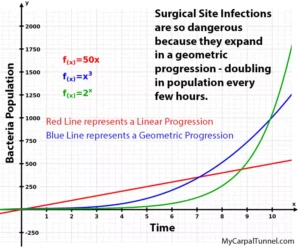 There are certain factors that can predispose a person to having a higher probability of infection post-surgery. One key factor is “Steroid Exposure” prior to surgery. Since Steroid Injections are considered standard treatment for Carpal Tunnel to try to prevent the need for surgery, many people with CTS have a higher predisposition to infection because of the Corticosteroid Injections they were given by the surgeon a few months prior to surgery
There are certain factors that can predispose a person to having a higher probability of infection post-surgery. One key factor is “Steroid Exposure” prior to surgery. Since Steroid Injections are considered standard treatment for Carpal Tunnel to try to prevent the need for surgery, many people with CTS have a higher predisposition to infection because of the Corticosteroid Injections they were given by the surgeon a few months prior to surgery
It is ironic that in an attempt to avert surgery with steroid injections, that surgeons actually create a higher risk of infection when surgery is finally performed. Other factors that predispose a person to a surgical site infection include: Obesity, Poor Nutrition, Poor Hygiene, Tabaco Use, Diabetes, and Compromised Immunity.
Also, despite all the procedures to sterilize surgical equipment and operating rooms, microbes cannot be seen with the naked eye and micro flora almost always finds a way to survive and thrive even in the cleanest of environments. Prescribing oral antibiotics for the patient is an important part of infection prevention in the post-operation procedure.
This simple oral prescription can make up for a multitude of errors in the prevention and containment of post-surgical site infections (SSI). Onset of an SSI is estimated to result in a hospital stay of 7 to 10 days on average and add over $3,000 in costs of post-operational care. Painful recovery times can be extended by months and permanent damage of tissue incurred, even amputation can be required when infection happens. Infections are just as likely with both types of surgical procedures.
It is important to keep in mind that there are several worst-case scenarios:
Infection is one worst case scenarios which can be mitigated usually with antibiotics, good hygiene and sterile surgical procedures.
Another worst-case scenario, is when the Median Nerve or the Ulnar Nerve is inadvertently touched with the scalpel in the procedure. A damaged nerve could lead to a life time of pain and lack of full-function of the fingers or thumb.
So, the question of how long does pain last after Carpal Tunnel Surgery is somewhat complicated and depends on so many factors, but let us deal with what is typical for each procedure.
The Typical Experience of a Patient without Complications
Open Surgical Procedure
If all goes well (no complications), then most patients experience intense pain while resting and increased discomfort with movement for the first 10 to 14 days. This pain is mitigated effectively by oral pain medication which your surgeon should prescribe for you before you undergo the surgical procedure, so you have it on hand when you are incapacitated and the pain kicks in high gear. However, there are serious side effects of all narcotics and serious pain medication. The patient should try to limit her or his exposure to these powerful and potentially addictive medications as soon as is possible once the discomfort is tolerable.
The surgeon should also prescribe a base line oral antibiotic medication before the procedure, to assure that any chance of infection is stomped out before it can get started.
Patient Question:
Why did my Surgeon tell me that I would recover within 2 to 3 weeks from Carpal Tunnel Surgery?
It then took me over 3 months to get back to a point where I could work and I seem to have permanent lack of grip strength, tenderness and scare tissue where I was cut. I did not expect to have to deal with all of this.
Sam
Ames, Iowa
Answers by Doctors at First Hand Medical:
Successful surgeons are optimistic by Nature and almost always focus on the best-case scenarios when describing what patients can expect. If they allowed themselves to focus on the negative outcomes or the worst-case outcomes, they would not be able to keep up in the morning and function. You want to have a positive and optimistic surgeon if you are undergoing surgery of any kind. It is a healthy place to be, when you are positive things almost always go better.
For a patient, however, it is important to go into any surgical procedure with your eyes wide open. You need to be ready for anything that could happen and prepare for the worst so, that you are pleasantly surprised when things go better and you are ready for whatever happens. You want to be optimistic, but prepared for what could happen. For instance, if you insist on an antibiotic prescription before surgery and maintain thorough hygiene, avoid steroids, avoid smoking, exercise and keep your immune system at its peak prior to surgery; you have a better chance of having no infection and a more rapid recovery.
The limitations of carpal tunnel surgery
 A “full recovery” may not be in the cards for every patient. For example, it is common to have permanent loss of grip strength.
A “full recovery” may not be in the cards for every patient. For example, it is common to have permanent loss of grip strength.
So, opening a jar, gripping a golf club, or holding garden tools firmly for digging might be compromised permanently.
Also, patients commonly report long-term tenderness at the point of incision, making it somewhat uncomfortable to ride a bike, gripping the handle bars. It can be difficult to grip a ski pole firmly for a secure pole plant on the ski slopes. You can also lose comfortable range of motion due to the formation of scar tissue. These effects are often permanent.
All in all, surgery is not to be taken lightly from a patient’s perspective. Surgery has to be repeated in about 85% of cases within seven years because it is not a permanent fix. You can learn more about the potential risks on this website under the title: Risks and Complications of Carpal Tunnel Surgery.
How does The Carpal Solution compare to surgery?
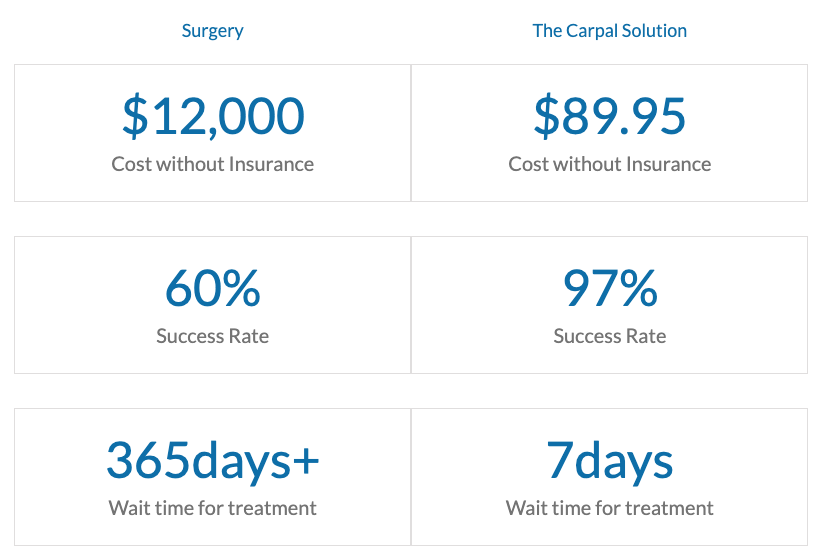
Choosing the right surgeon
You should avoid surgery if you can, but if you feel that you have exhausted all clinically documented treatments, and need to resort to surgery on your hand, you should pick a good surgeon with a strong track record and schedule sufficient downtime for full recovery.
It would also be wise to line up someone who can lend you a hand when needed during recovery. Handicapped people or caregivers taking care of a loved one, find it particularly difficult to line up the support.
If your symptoms do not go away after two or three months post-surgery, or you have new symptoms you did not have before surgery, you should visit the specialist to see what is going on with your hand. Patient survey’s give surgery a 50 to 60% success rate, so it is not unusual to have after effects and a long recovery period.
 How long does carpal tunnel surgery last?
How long does carpal tunnel surgery last?
- Carpal tunnel surgery is an outpatient procedure. Meaning that you will have the operation and go home that same day.
- This means you will not need to bring an overnight bag or make arrangements from being away from home, depending on the location of the surgery.
- The duration of the actual carpal tunnel surgery is typically around 10 minutes.
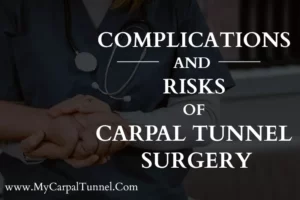 Specific Risks of Carpal Tunnel Surgery:
Specific Risks of Carpal Tunnel Surgery:
- The Transverse Carpal Ligament – the largest and strongest ligament in the hand wrist area – is severed during Carpal Tunnel Surgery to relieve pressure on the Median Nerve.
- Specific risks and complications that could arise from such a surgery include:
- Permanent loss of grip strength is common with Carpal Tunnel Surgery.
- Permanent Tenderness at the point of incision is also common.
- Some people experience permanent loss of Hand Dexterity and Fine Motor Skills.
- Extended rehab periods are common. Rehabilitation runs from six weeks to over a year for some patients to regain functionality of their hands and wrists.
- Scar Tissue Development which can increase pressure on the nerve and make CTS worse after surgery than it was before.
- Permanent Nerve Damage can occur if the scalpel touches the Median Nerve which runs just under the Transverse Carpal Ligament, causing permanent nerve damage. Damage to the tendons, muscles and other soft tissue that run just under the Transverse Carpal Ligament.
- The need for a repeat surgery even after a successful Carpal Tunnel Surgical Procedure, because there is no permanent fix for Carpal Tunnel Syndrome. Second surgeries with any surgical procedure carry much more risks and are more complicated to perform due to scar tissue formation and loss of structural strength of the surrounding tissue from the original surgery.
What to expect after surgery
For several weeks following surgery, the hand has to be bandaged in such a way to restrict movement and minimize scar tissue development. It is important to allow the healing to go undisturbed.
The stitches can usually be removed at: 2 ½ to 4 weeks. However, the healing continues under the skin for at least six weeks and up to eight weeks.
Rushing back to activity too fast can cause complications with scar tissue formation and delayed healing. It can also cause further injury of the soft tissue surrounding this delicate narrow passage at the base of the hand.
The tendons that control the movement of your hand and fingers all run through the Carpal Tunnel proximate to the Median Nerve. This is one of the reasons hand movement should be kept to a minimum during the early weeks of recovery after the procedure. Re-injury is not pleasant and can lead to significant scar tissue development.
There is still hope after Carpal Tunnel Sugery.
Whatever your situation post-surgery, do not lose hope because the symptoms did not go away as you had expected and hoped. There is a non-invasive, clinically documented treatment you can turn to.
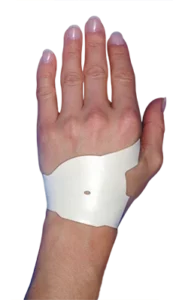 It was developed by Doctors and has a 97% success rate. It is called the Carpal Solution Therapy and has been used successfully by over 450,000 people.
It was developed by Doctors and has a 97% success rate. It is called the Carpal Solution Therapy and has been used successfully by over 450,000 people.
Also, if you haven’t had surgery and are just looking into it. You should try the Carpal Solution before you consider the surgical procedure.
The Carpal Solution even works for people after surgery has failed. You must wait at least 2 months after surgery before you use the Carpal Solution Therapy.
 Created by renowned Harvard health care professionals.
Created by renowned Harvard health care professionals. 

 Start getting back to your active life today without the risks, complications and recovery time associated with surgery.
Start getting back to your active life today without the risks, complications and recovery time associated with surgery.